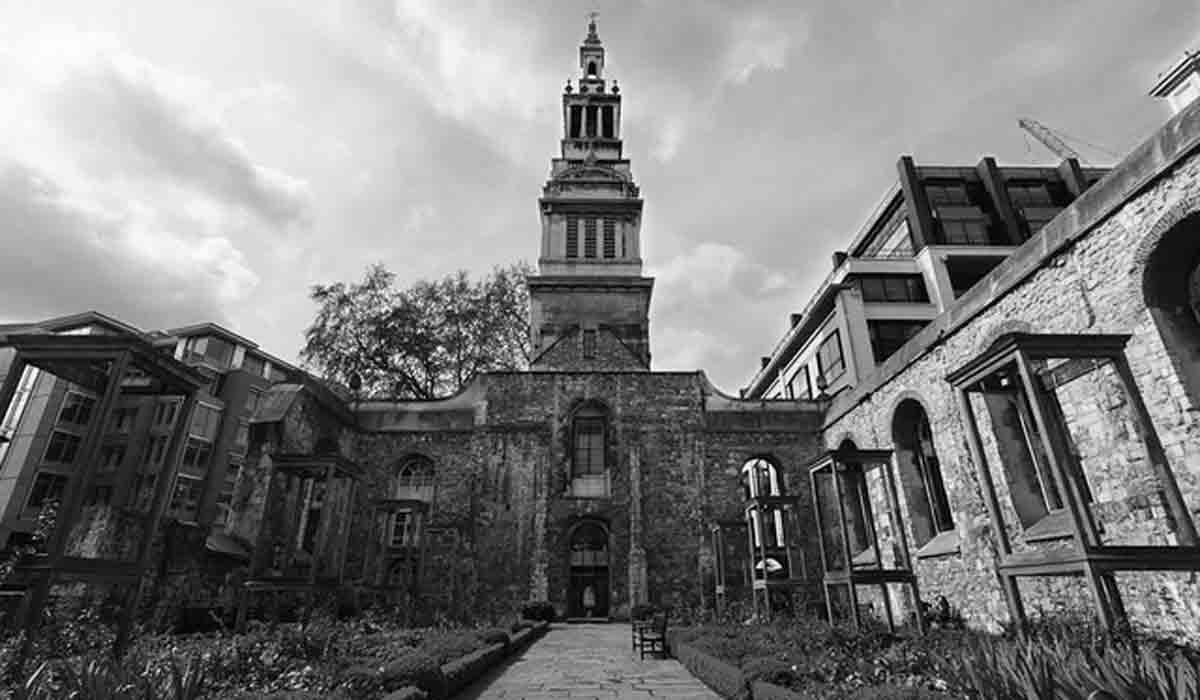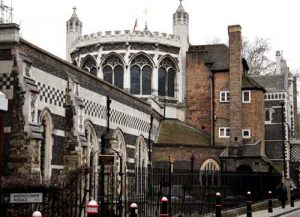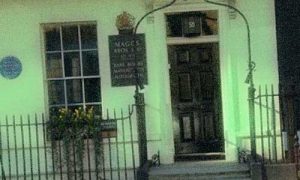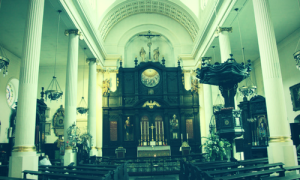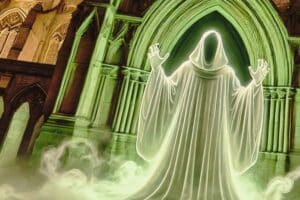JAMES CLARK reveals the spectres that lurk within the City of London landmark garden at Christchurch Greyfriars
In the shadows of a ruined Wren church on London’s Newgate Street lies a peaceful garden.
At least, it looks peaceful; if the tales are to be believed, at least five ghosts haunt this place – and two don’t get along with each other.
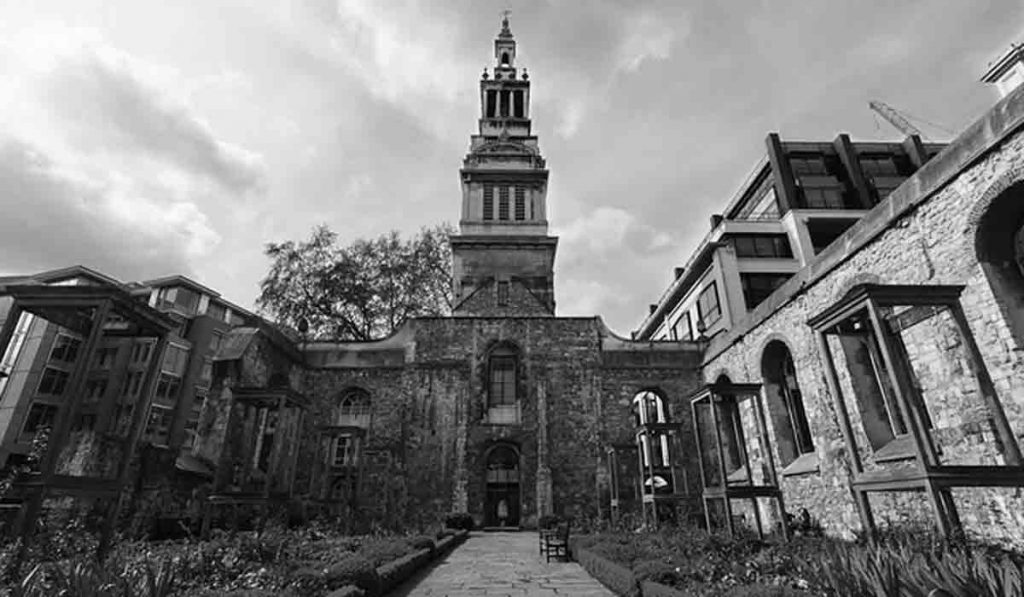
Queen Isabella, the ‘She-Wolf of France’
Most notable of these spectres is that of Queen Isabella, the ‘She-Wolf of France’. Isabella – daughter of the French king Philip IV – married Edward II of England in 1308.
Sadly, her husband had little time for her, and after Isabella sailed to France on a diplomatic mission in 1325 she became the lover of Roger Mortimer, a nobleman Edward had previously exiled.
Together with other exiles, Isabella and Mortimer raised an army. In 1326 their forces landed in England and routed the king’s troops.
Edward was deposed and imprisoned, ultimately in Berkeley Castle in Gloucestershire where he died on 21 September 1327, probably murdered on the orders of Isabella and Mortimer.
Earlier that same year, Edward and Isabella’s son had been crowned as Edward III, the new king of England.
For a short while, life was good for Isabella as she ruled as regent, but in 1330 her son deposed Mortimer and seized power for himself.
Mortimer was hanged at Tyburn on 29 November. Isabella was imprisoned at Castle Rising in Norfolk.
As an old woman, Isabella joined the Poor Clares, a Franciscan order of nuns, and after she died in 1358 her body was taken to London and buried in the grounds of the church that stood here at that time. She was buried in her wedding dress, and the heart of her murdered husband was interred with her. Isabella’s ghost is claimed to clasp the heart in her hands as she wanders this site.
That church, which was attached to a Franciscan monastery, was destroyed during the Great Fire of 1666. It was rebuilt under the direction of Sir Christopher Wren, but that church was bombed during the Blitz.
Lady Alice Hungerford
The second ghost story relates to a beautiful woman executed for murdering her husband.
Her name is usually given as Lady Alice Hungerford, although it seems that her first name was actually Agnes.
Found guilty of arranging the murder of her first husband, John Cotell, either by poisoning or strangulation, Agnes was hanged at Tyburn in 1523.
A melodramatic story, thought to originate from the Victorian period, tells that both of the aforementioned ghosts once manifested here at the same time.
Supposedly, each was so jealous of the other’s presence that a furious argument erupted!
Elizabeth Barton
The third ghost here is that of Elizabeth Barton, who was born in around 1506 and who became known as the ‘Holy Maid of Kent’.
In around 1525, Elizabeth began to experience trances and visions.
The prophecies she uttered in her fits were tolerated until she started to predict dire consequences for King Henry VIII if he went ahead with his plan to annul his marriage to Catherine of Aragon and marry Anne Boleyn. Elizabeth was arrested and compelled to confess faking her ecstasies and inventing her prophecies.
She was executed at Tyburn in 1534.
A Ghostly Greyhound
Ghost number four is a spectral dog, possibly a greyhound.
This phantom was said to have appeared here many times during the years leading up to the First World War.
A Cowled Monk
The final apparition is of a cowled monk, dressed not in the grey suggested by the name Greyfriars but in cloth of an earthen hue.
Both colours are associated with the Franciscan order.
This ghost supposedly appears during the autumn, his habit blending in with the russet leaves blanketing the ground as he strolls around this site in the pre-dawn hours. As the sun rises, so he fades away.
JAMES CLARK is the author of several collections of ghostly tales, including ‘Haunted London’, ‘Haunted Wandsworth’ and ‘Haunted Lambeth’. Website: www.james-clark.co.uk

